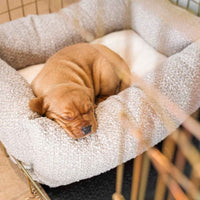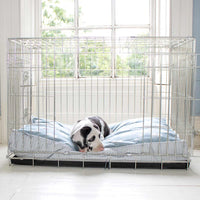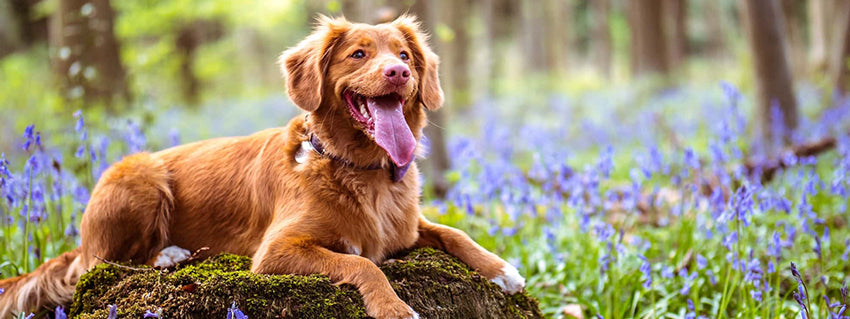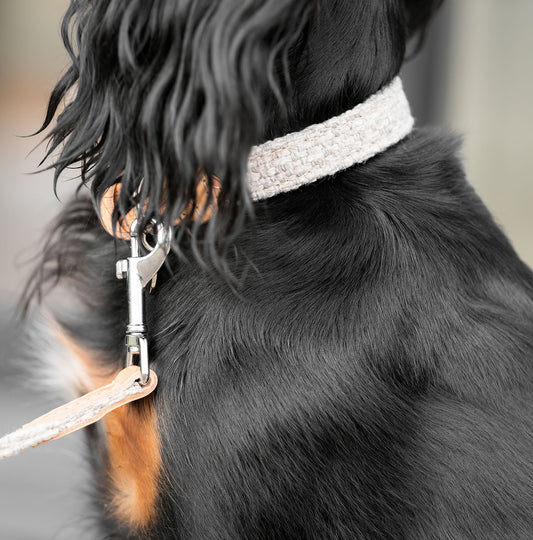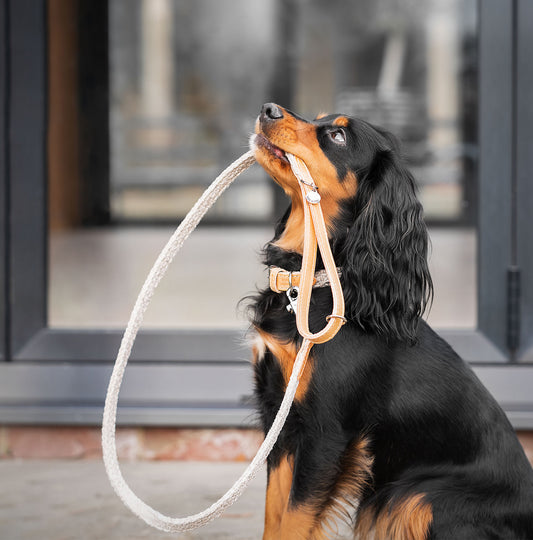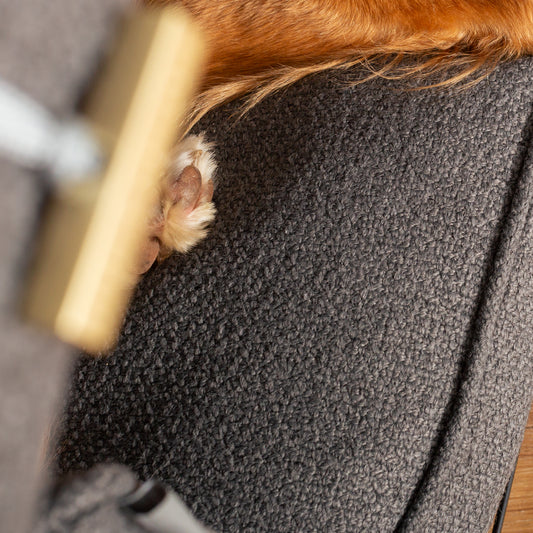Longer daylight hours, blooming plants, an abundance of life beginning to come out of hibernation; Spring is a wonderful time of year. There are positives to be found in every season, but there is something special about Spring that manages to lift the spirits like no other. Longer days, milder weather and a wash of colour on the landscape will be welcomed by us all.
For dog owners it’s the ideal time to make your dog walks a little longer. Perhaps you’ll find some new routes to explore that will add interest for both you and your four-legged friend. There are a few things to consider when walking your dog in the Springtime. Here we highlight we highlight some of those things so you can plan some new adventures.
Where To Walk Your Dog In Spring
The places that you walk to or around in the Spring may not differ greatly to those in Winter, but what you do on your walk may well change. Here are a couple of places we like to enjoy on our Springtime dog walks:
- The Park - Parks are always a brilliant place to take your dog for their daily exercise. Especially parks with open space where they can run and let off some steam. With the milder weather, and hopefully the odd sunny spell, your dog walks in the park could include a game of fetch. Next time you go on your walk, take your dog’s favourite ball or throwing toy and see if you can fit in a fun game to add spice to the outing.
- The Woods - Dogs love woodland walks. There are a plethora or sights, sounds and smells in the woods that your dog probably won’t experience on a normal day. If you have some woodland near or can get to a wooded area easily, then Spring is the perfect time to get out and explore.
- The Beach - Another landscape that is loved by our canine friends, the beach offers a place to run, and if your dog likes water, to have a good swim. One thing to be aware of is that many beaches will be closed to dogs in the Summer months, so be aware of the beach that you’re visiting and make sure that you’re allowed to visit. There are many dog friendly beaches around the country; the trick is to find the perfect one! Remember to take your dog’s drying coat with you in case they go for a splash and don’t forget a couple of toys. Like any other dog walk, be aware of other people and only let your dog off the lead if it’s safe to do so.
- The Countryside - If you live in a rural location then a walk through the countryside can be a joyous adventure for both you and your dog. The landscape around us is full of change at this time of year and your dog will love experiencing the new smells and colours that emerge. Just make sure you stick to the rules of the countryside - stick to public footpaths and always keep your dog on their lead around livestock.
Wherever your adventures take you, always be aware of other people around. If it’s busy keep your dog on their lead and consider saving any games of fetch until next time.
Potential Springtime Hazards
There are a few things to consider when setting out for your Springtime dog walks. Here are a couple to be particularly aware of:
- Joggers & Cyclists - Dog walkers like yourselves won’t be the only people making the most of the extended daylight hours, but you’ll probably encounter cyclists, joggers and horse riders more often too. If you see any of these coming, keep your dog on a shortened lead next to you and wait for them to pass safely. The last thing you want is for your dog to chase a cyclist or rider as it could be dangerous for both parties.
- Livestock - We did mention this briefly before, but it’s really important that you take note of the animals around you. In Springtime especially, there will be lots of young animals around. Cows with calves can be particularly defensive of their young so it might be best to stick to routes without. Always assess the situation and keep your dog on a lead around farm animals and horses.
Beware of Poisonous Springtime Plants
One of our favourite things about this season is the abundance of wildlife that appears, but this can also be a potential danger to your pets too. Make sure you are aware of what plants and flowers are poisonous to pets and try to keep your dog away from them on your walks. Some plants to avoid are as follows:
• Azalea
• Bluebells
• Buttercups
• Cyclamen (roots)
• Daffodils (bulbs)
• Foxgloves
• Hyacinths (bulbs)
• Ivy
• Lupins
• Rhododendrons
• Tulips
If your dog shows signs of being ill and you think they may have ingested something poisonous, seek the advice of your Vet immediately. If you see them eat something you know is poisonous, don’t wait for symptoms to appear, but seek medical advice straight away.
Don’t go too far, too quickly
It might be tempting to make your Springtime dog walks much longer than usual, but It’s important to consider your dog’s fitness. If your dog walks were pretty short during Winter your dog may not be as fit or have the same stamina as they had last Summer. Increase the length of your dog walks gradually so that they can enjoy the experience without getting completely worn out.
Make Sure You Have the Right Equipment and Clothing
It’s easy to focus on what your dog needs for their walks, but don’t forget to consider your own comfort. If you’re going for a walk in the Countryside or the woods, make sure you select the correct footwear and clothing. A good sturdy pair of shoes or trainers (or walking boots in some cases) are essential for uneven terrains.
Also make sure your dog’s walking set is a good fit. A well-fitted harness is a brilliant item for dog walks as it offers greater comfort and control than just using a collar.
Plan Your Dog Walks
Wherever your adventures take you, make sure you plan ahead and take everything that you’ll need with you. And we don’t just mean a walking set, but the other accessories that will make your dog walks go smoothly. Some items that we’d suggest you take include the following:
• Training Treats - always reward good behaviour
• Throwing Toy - perfect for the park or beach when it’s quiet
• Small Travel Bag - Depending on how long you’re out, it might be worth taking a travel bowl with some fresh water and even some dry food. Your dog may well work up an appetite.
• Drying Coat - if your dog likes a splash in the water and you’re going to the beach a drying coat is a great way to keep them warm and dry on the way home.
• Dog Coat - Don’t forget those April Showers. A good quality dog coat may be an essential accessory at this time of year.
We hope we’ve given you some great ideas for your upcoming walks. Take note of the hazards we mention and, with a little planning, we’re sure you and your dog will be enjoying some wonderful walks this Spring.




























